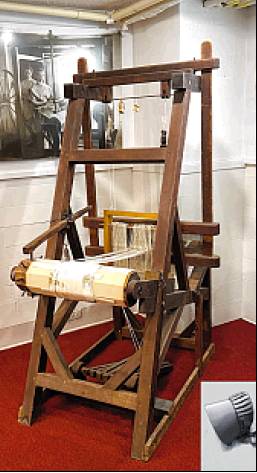GLEANINGS FROM THE CORN FLATS
The incredible Shakers: So much more than a devout sect
BY MICHAEL A. DAVI Niskayuna Historical Committee
No doubt residents of Niskayuna have heard of the Shakers. Familiarity is likely because the Shaker name has found its way into our local culture designating roads, schools, businesses and the like.
Few, however, probably recognize the broad and numerous contributions this curious religious sect brought to our area and far beyond.
Recounting their many innovations and talents absolutely boggles the mind.
Just consider their involvement in disciplines ranging from chemistry to carpentry, agriculture to architecture, carpets to clothing, brooms to beekeeping to baked goods, printing and pens, towels to tools — and that’s just a start.
Shaker origins in the U.S. trace back to a charismatic woman named Ann Lee, who was said to have had a number of spiritual “revelations” and dreams. Lee joined a Quaker splinter group in Manchester, England, in the mid-1700s founded by James and Jane Wardley, known as the Wardley Society.
Seeking relief from religious persecution, Lee and a few followers came to New York City in 1774.
Two years later, they settled upstate in what was a swampy, frontier wilderness local Native Americans called “Canas-ti-ge-noe” (present day Niskayuna). At the time the settlement was part of the larger town of Watervliet.
Lee’s followers were more formally known as the United Society of Believers in Christ’s Second Appearing. Due to their Quaker origins they were initially referred to as “Shaking Quakers” because of euphoric movements during their religious ceremonies.
To broader society, they simply became known as “Shakers.”
For Shakers, life was motivated by a deep spiritual belief in striving for heavenly perfection. A central tenet of their belief was that work was a form of worship, a practical side of religion, as they endeavored for flawlessness in all they did.
This inspired the saying “Hands to Work, Hearts to God.”
Celibate, not marrying or bearing children, the group attracted followers drawn by their love, strict orderly communal lifestyle and comradery. Orphans were adopted, as were other children whose parents could not care for them.
Challenges of their highly disciplined life were offset by a stable, safe environment, unheard-of equality, plus excellent learning and skill-sharing practiced among the believers.
More than 150 years before voting rights for women and decades before the emancipation, Shakers practiced social, economic and spiritual equality among the faith’s “brothers” and “sisters.” They were pacifists and did not believe in slavery.
Shakers were incredibly innovative in their pursuit of excellence.
Inventions such as the flat corn broom and wooden clothespins were simple yet invaluable work-savers still in use today. Premium quality seeds, packaged and distributed in paper envelopes, printed, folded and sealed by Shaker hands were highly renowned.
Even the circular mill saw is an innovation attributed to a Shaker sister.
Clothing and blankets made by Shakers were the finest available. Even here, innovations such as water-repellant cloth and fabrics that required no ironing were revolutionary advancements introduced by Shakers.
Whatever they put their hand to was exceptionally well-done, driven by extension of their inner spirit.
The opening of the Erie Canal, followed later by the Troy-Schenectady rail line, both operating through Niskayuna, afforded novel opportunity for Shaker products to reach a much broader market. It seems fitting that the Niskayuna train depot still stands today as a silent sentinel example of a quality-built Shaker structure.
It would be difficult to find a more influential local group that made such a significant impact on our town and well beyond.
Interested readers should consider a visit to the nearby Shaker Heritage Society adjacent to the Albany International Airport. See www.shakerheritage.org for details.
NOTE: We encourage any past or present town residents to contact the Niskayuna Town Historian at dbrennan@niskayuna. org regarding any information, resources, or stories they might like to share about Niskayuna’s distinctive history.

